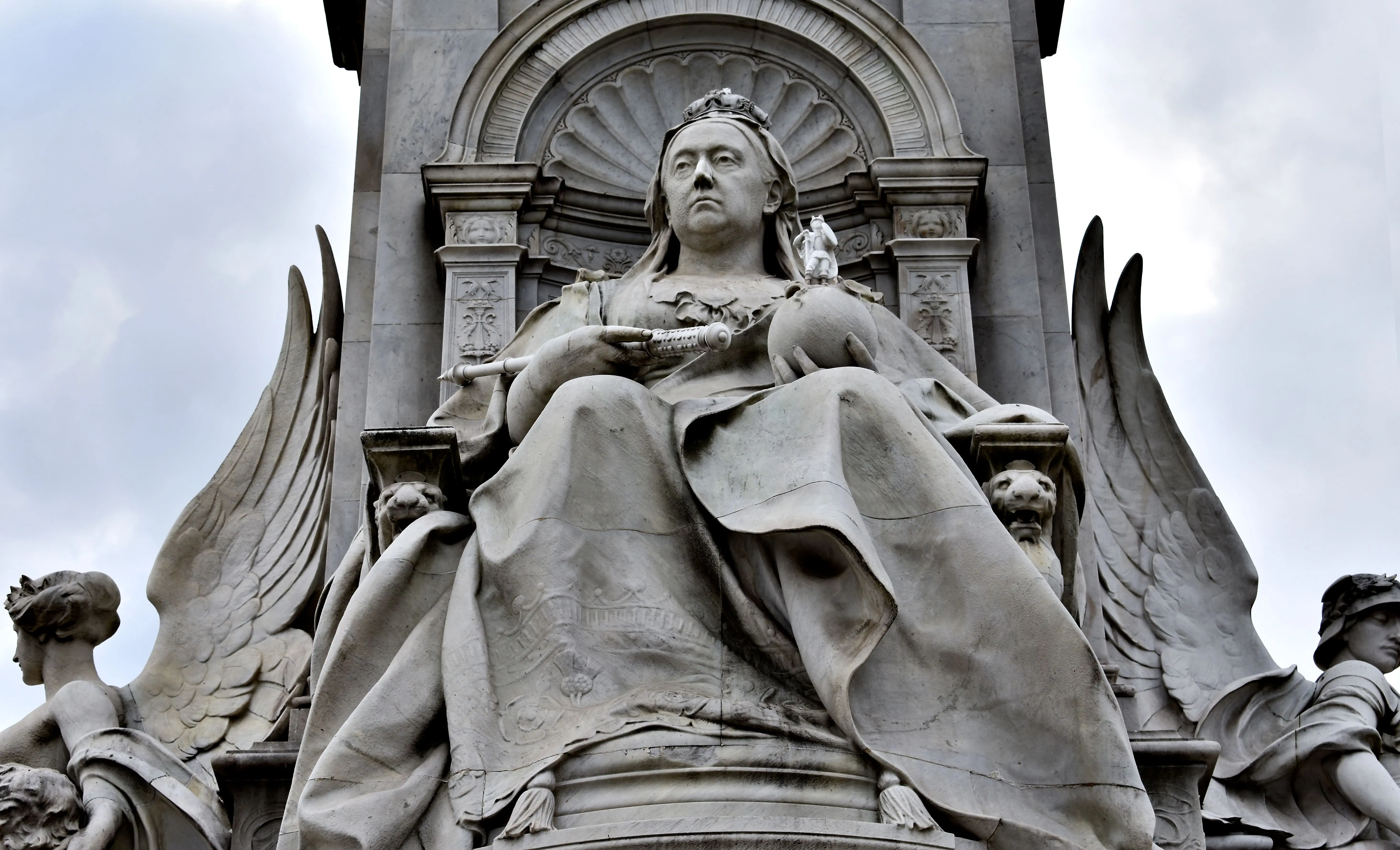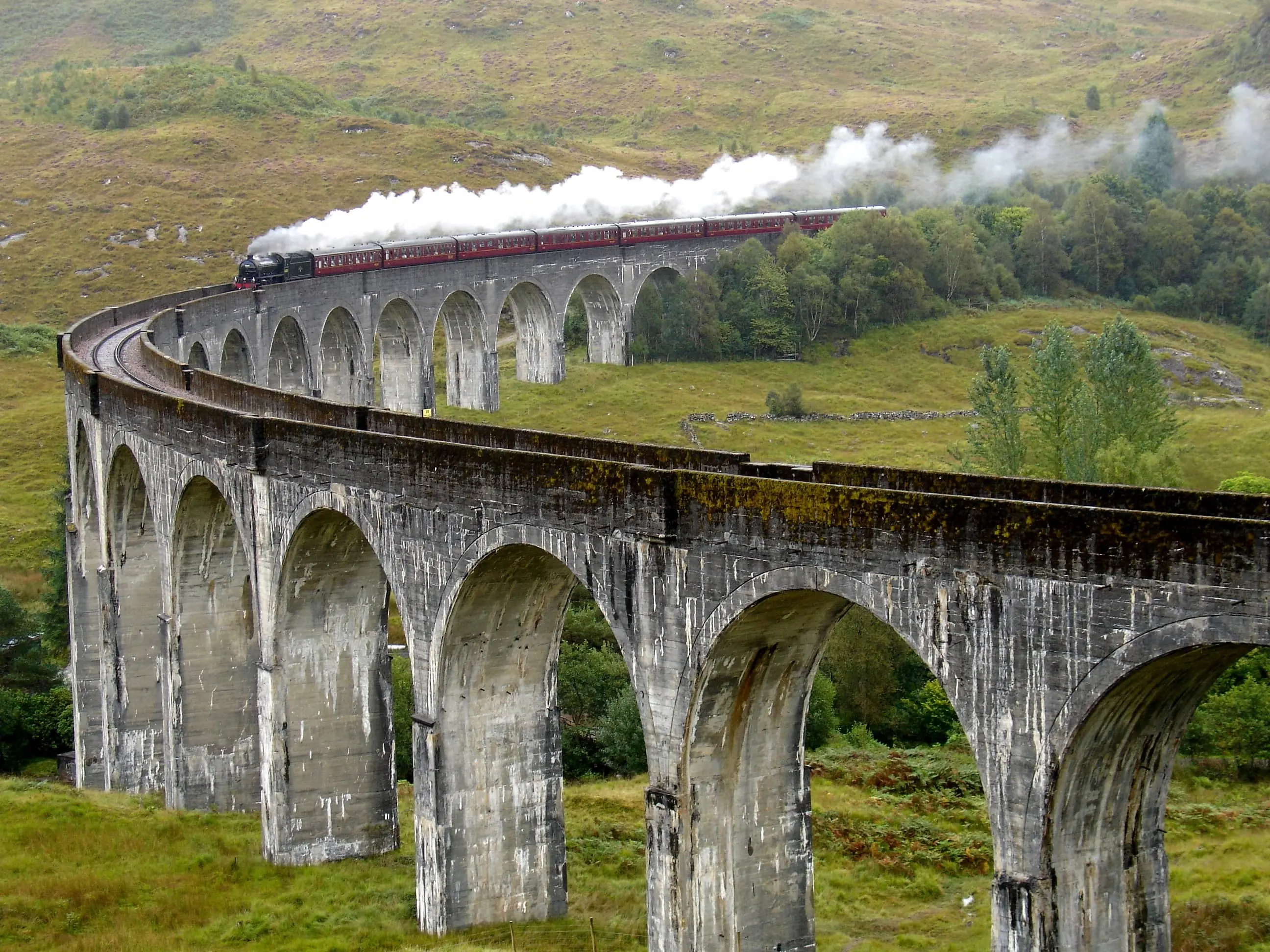The Royal Train is more than a mode of transport for the royal family. It represents an intersection of royal duty, technological innovation, and national heritage.
From Queen Victoria's gold and silk carriages to the bulletproof train of the Second World War, the Royal Train is British history. The train also offers an intimate glimpse into the world of Britain's most famous family.

What is the Royal Train?
The British Royal Train transports the most senior royals and their staff throughout the country. It allows the family to carry out Royal Duties onboard and to travel overnight, ensuring they arrive at destinations well-rested for official engagements.
It’s important not to confuse the Royal Train with the Belmond Royal Scotsman. The latter is a luxury sleeper train that travels through the Scottish Highlands.
A timeline of the Royal Train
From its early days as a lavish mode of travel for Queen Victoria to its modern, secure design, the Royal Train has changed a lot. Over the eras, new features have been introduced to this iconic locomotive.
Below is a timeline of the key moments in its history which showcases how the train has kept pace with changing times while remaining a symbol of royal travel.
The Wolverton Railway Works: Where it all Began
Since 1842, Wolverton Railway Works (Wolverton, Buckinghamshire) has been closely linked to The Royal Train. It was established by the London and Birmingham Railway Company in the 1830s, situated at the midpoint of the railway line between London and Birmingham. Considered one of the oldest continuously operating railway works in the world, it primarily served as a carriage works, becoming the largest in the UK at one point. The town of Wolverton itself was built to house railway workers.
By 1869, the Wolverton Works had become the primary site for designing and constructing Royal carriages.
Numerous Heads of State (including Queen Victoria) made use of the facilities at the Wolverton Works, often pausing there to rest while their train was serviced, new crews took over, and fresh locomotives were provided - particularly during longer journeys to and from Scotland.
The London & North Western Railway took immense pride in its association with the Royal Family, even producing postcards showcasing the luxurious interiors and exteriors of Royal carriages. Today, such images are strictly forbidden, and access to The Royal Train remains highly restricted.
1842: Queen Victoria’s gold and silk carriages
In 1842, Queen Victoria became the first British monarch to travel by train. At first, she was unsure whether she wanted to, as there was a widespread belief at the time that fast trains could cause insanity.
Nonetheless, her husband Prince Albert convinced her to try it out. Queen Victoria set strict speed limits, 40 mph in the day and 30 mph at night, and travelled from Slough, Berkshire to Paddington Station, London. In her diary, the queen described the trip as ‘delightful and so quick.’
Queen Victoria commissioned a collection of private carriages for the Royal Train 27 years later. She personally contributed from her own finances to have them built.
The queen decorated the carriages in 23-carat gold and blue silk. They were in service until the early 1900s but are now on display at the National Railway Museum in York.
The royal rail was essential to Queen Victoria, who considered travelling across the country her duty. Previous monarchs were more likely to stay in their palaces, but Queen Victoria changed this tradition.
1890-1903: Mod con updates
The 1890s saw the Royal Train undergo a comprehensive refurbishment to add modern conveniences. From electric lighting to an onboard toilet, the train became a modern palace on wheels.
A few years later, in 1903, King Edward VII requested an update of the train’s interiors to resemble the Royal Yacht. The revamped Royal Train featured white-roofed wooden carriages.
Inside, these carriages had cooking facilities, baths, and telephones. They even had an early version of air conditioning.
Travel during the First and Second World Wars
Royal travel has always taken place in secret. Even today, train staff don’t know which royals will be onboard. However, extra precautions were taken to keep Royal Train travel secret during the world wars.
During the First World War, King George V travelled the country via the Royal Train so much, it became his temporary home. Other members of the Royal Family used the train extensively during the First World War too. They hosted motivational tours onboard.
The family went on to use the train in the Second World War, especially King George VI, who visited bombed parts of the country. Due to the threat of bombing, the carriages of the Royal Train were upgraded to be bulletproof.
The new train had a 56-ton armour-plated roof, a maroon livery, and a red and black coach lining. Inside, there were special cabinets installed to hold confidential documents.
Further upgrades and Royal bathroom preferences
Wolverton Works built this Royal Train in 1941. The Works had designed and constructed Royal carriages since 1869. They had also housed carriages built elsewhere since 1842.
Many years later, during the 1980s, the train underwent a £320,000 renovation. It received bulletproofing improvements and rocketproof security upgrades. The carriages transitioned from Queen Victoria’s lavish designs to more functional designs.
That said, Queen Elizabeth II requested a luxury upgrade: her own bath. The driver would stop the train when she wanted to use it.
In the years previous, her parents, George VI and Elizabeth Bowes-Lyon, also had baths onboard. They had to ensure the water didn’t rise above a red marker line. This would have been important due to war rationing, but also to stop the water sloshing around when the train moved.
Prince Philip had a luxury upgrade, too, having a bathroom shaving mirror mounted next to the toilet so he could shave while seated.
Is there still a Royal Train?
The current Royal Train came into service for Queen Elizabeth II’s Silver Jubilee in 1977. One of two locomotives pulls this train, the 67006 ‘Royal Sovereign’ or the 67005 ‘Queen’s Messenger’. These locomotives use eco-conscious biofuel made from vegetable oil waste.
Travelling via the Royal Train isn’t cheap. It’s four times more expensive than travelling by plane. When King Charles III travelled from London to Cwmbran in Wales in 2017, it cost £130.84 per mile. A standard rail ticket would have cost £1.30 per mile.
Where is the Royal Train now?
Presently, the train is stationed and maintained in a dedicated secure compound at the northwest corner of the Wolverton Railway Works. Network Rail owns the Royal Train, and DB Cargo UK maintains and operates it.
What’s inside the Royal Train now?
The London and North West Railway has long published postcards displaying the Royal carriages.
It is public record that the current carriages on the Royal Train include:
- The King’s saloon, comprising a sitting room, bedroom, and bathroom
- The Queen’s saloon, with the same rooms as above
- The Prince of Wales’ sleeping car
- The Prince of Wales’ saloon
- The royal household’s sleeping quarters
- The royal family’s 12-seater dining car and kitchen
- The royal household’s dining car and kitchen
- The royal household’s couchette, diesel generator, and brake van
Despite the Royal dining car, Queen Victoria refused to eat onboard, considering this bad for digestion. King Edward VIII asked for all proteins served to have been hunted or fished at his properties.
Today, King Charles has his own special dietary requests. All produce is to be locally sourced and presented on his monogram china.

Travelling with Avanti
The Royal Train isn’t particularly fast, travelling at around 70 mph. This is much slower than Avanti’s trains, one of which missed the record for the fastest journey between London and Glasgow by just 21 seconds..
That’s not to say the Royal Train isn’t punctual. It always arrives within 15 seconds of its estimated arrival. There’s even a staff member who routes faster trains around the Royal Train to avoid delays.
While the Royal Train is only open to the royals, Avanti trains are open to everyone. You can save on ticket prices with our Railcards, Group Fares, and Advance Tickets.

